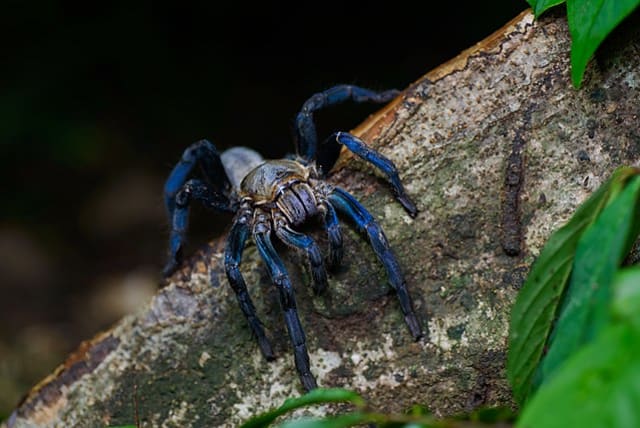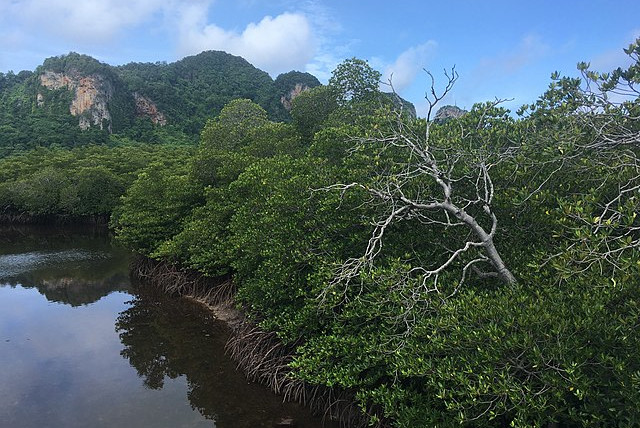Electric blue species of Tarantula found among Thailand's mangrove trees

The blue coloration on the spider's back and legs is exceptionally unique, the color blue otherwise being almost unseen in nature.
A startling species of tarantula has finally been discovered in its natural habitat among the mangrove trees of Thailand according to a report from Science Alert on Tuesday.
The spider has a unique and mesmerizing blue color and has long been sold as a novelty for black-market pet collectors.
Known by its street name the 'Electric Blue Tarantula’, the species is called Chilobrachys natanicharum and is the first tarantula found amongst Thailand's mangrove forests.
Last year's discovery of the first tarantula in Thailand prompted efforts to search the region for others.
Leading the mission was Narin Chomphuphuang of Khon Kaen University, Thailand.
"These tarantulas inhabit hollow trees, and the difficulty of catching an electric-blue tarantula lies in the need to climb a tree and lure it out of a complex of hollows amid humid and slippery conditions. During our expedition, we walked in the evening and at night during low tide, managing to collect only two of them," Chomphuphuang said of the expedition.
One-of-a-kind (almost)
The blue coloration on the spider's back and legs is exceptionally unique, the color blue otherwise being almost unseen in nature.
The few animals that do have blue colors typically use pigments under the skin, the electric blue tarantula however does not.
These arachnids utilize structural coloring, minuscule organic structures that reflect light and produce a blue tone.
This unique method is also found amongst species closely related to this one and indeed it has been shown that the tarantulas are able to recognize and react to the sight of another of their species.
However, the habitat of this rare creature is under threat according to Chomphuphuang.
"The electric blue tarantula demonstrates remarkable adaptability. These tarantulas can thrive in arboreal as well as terrestrial burrows in evergreen forests. However, when it comes to mangrove forests, their habitat is restricted to residing inside tree hollows due to the influence of tides," he said.
Jerusalem Post Store
`; document.getElementById("linkPremium").innerHTML = cont; var divWithLink = document.getElementById("premium-link"); if (divWithLink !== null && divWithLink !== 'undefined') { divWithLink.style.border = "solid 1px #cb0f3e"; divWithLink.style.textAlign = "center"; divWithLink.style.marginBottom = "15px"; divWithLink.style.marginTop = "15px"; divWithLink.style.width = "100%"; divWithLink.style.backgroundColor = "#122952"; divWithLink.style.color = "#ffffff"; divWithLink.style.lineHeight = "1.5"; } } (function (v, i) { });

